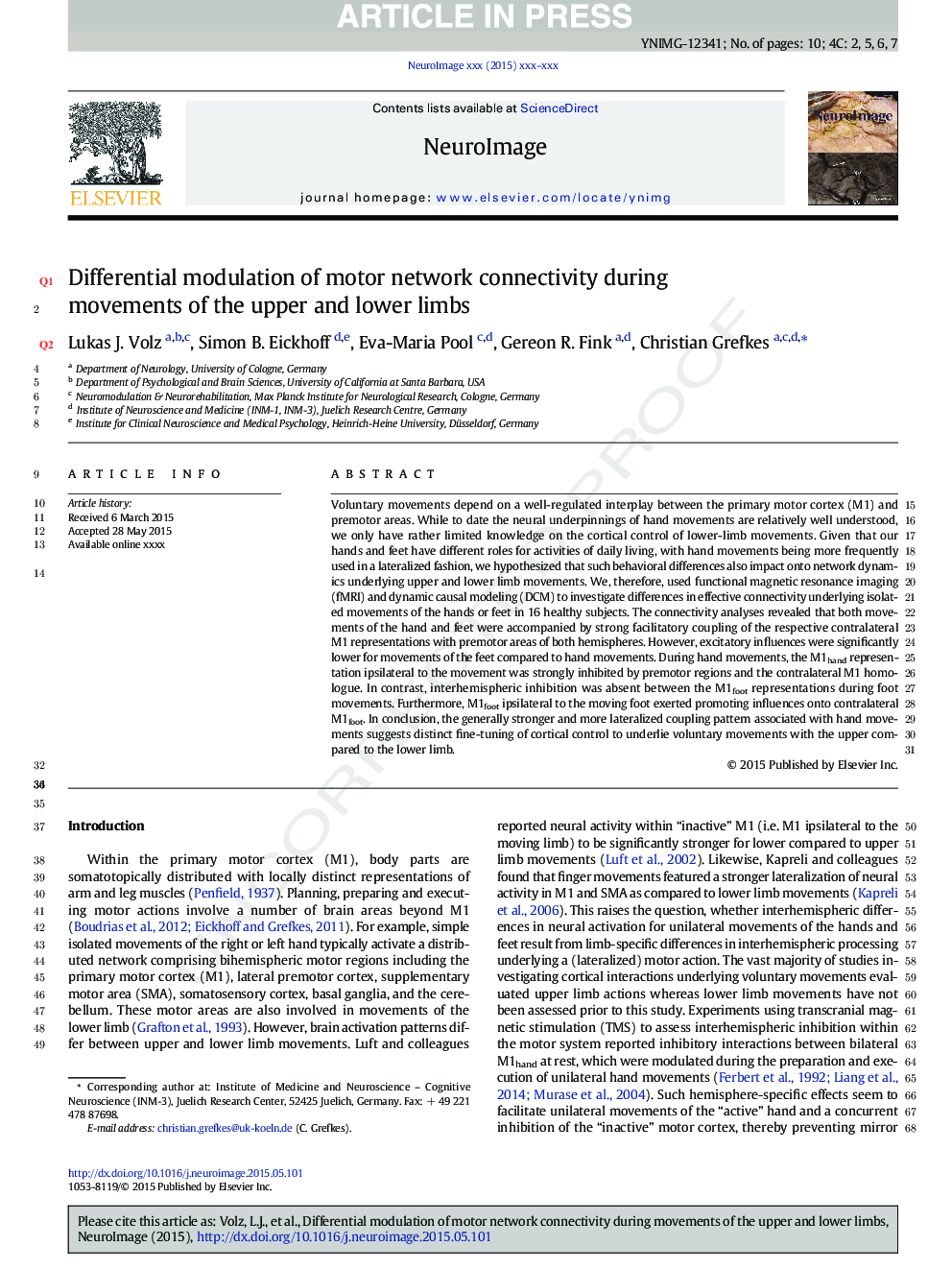| Article ID | Journal | Published Year | Pages | File Type |
|---|---|---|---|---|
| 6024801 | NeuroImage | 2015 | 10 Pages |
Abstract
Voluntary movements depend on a well-regulated interplay between the primary motor cortex (M1) and premotor areas. While to date the neural underpinnings of hand movements are relatively well understood, we only have rather limited knowledge on the cortical control of lower-limb movements. Given that our hands and feet have different roles for activities of daily living, with hand movements being more frequently used in a lateralized fashion, we hypothesized that such behavioral differences also impact onto network dynamics underlying upper and lower limb movements. We, therefore, used functional magnetic resonance imaging (fMRI) and dynamic causal modeling (DCM) to investigate differences in effective connectivity underlying isolated movements of the hands or feet in 16 healthy subjects. The connectivity analyses revealed that both movements of the hand and feet were accompanied by strong facilitatory coupling of the respective contralateral M1 representations with premotor areas of both hemispheres. However, excitatory influences were significantly lower for movements of the feet compared to hand movements. During hand movements, the M1hand representation ipsilateral to the movement was strongly inhibited by premotor regions and the contralateral M1 homologue. In contrast, interhemispheric inhibition was absent between the M1foot representations during foot movements. Furthermore, M1foot ipsilateral to the moving foot exerted promoting influences onto contralateral M1foot. In conclusion, the generally stronger and more lateralized coupling pattern associated with hand movements suggests distinct fine-tuning of cortical control to underlie voluntary movements with the upper compared to the lower limb.
Related Topics
Life Sciences
Neuroscience
Cognitive Neuroscience
Authors
Lukas J. Volz, Simon B. Eickhoff, Eva-Maria Pool, Gereon R. Fink, Christian Grefkes,
